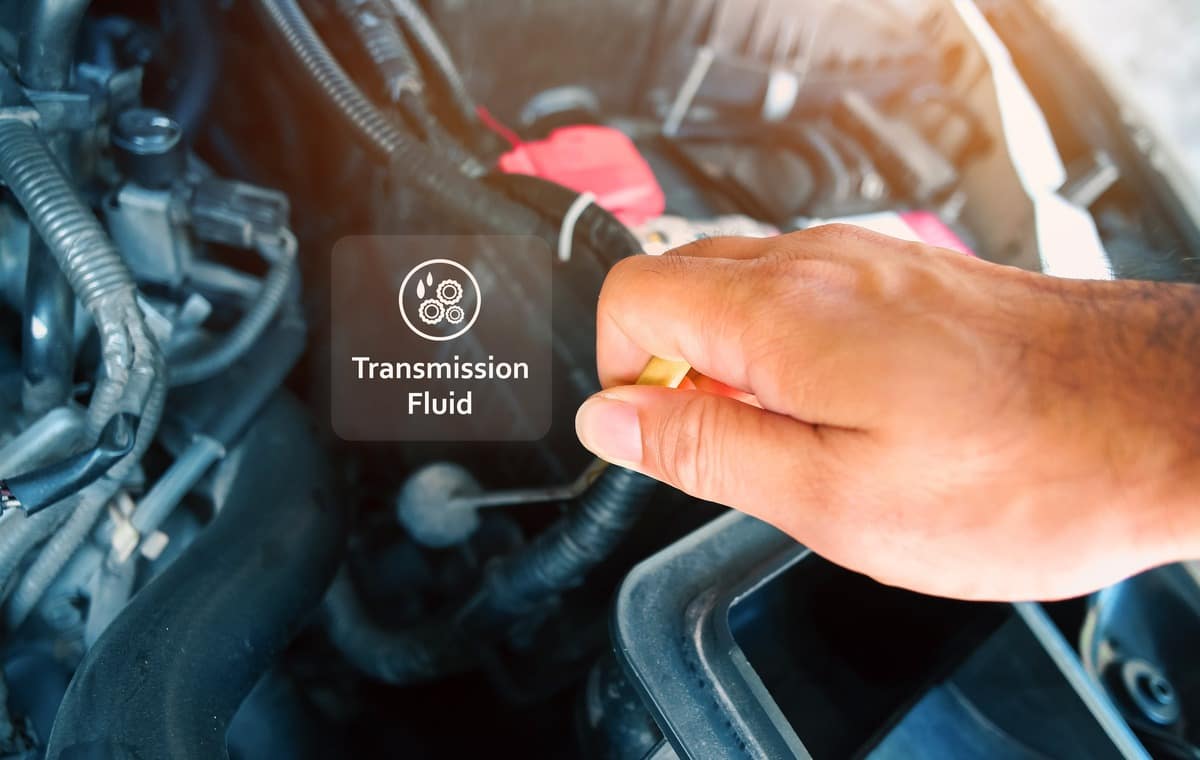SYMPTOMS FOR LOW TRANSMISSION FLUID
Your vehicle shouldn’t lose automatic transmission fluid in normal operation, so if the level is down, there’s a good chance there’s a leak somewhere. Consult a service professional immediately to have it addressed to avoid possible damage to the transmission. Also, some automatic transmissions do not have dipsticks or may require that a service professional inspect the automatic transmission fluid level. Check the vehicle’s owner’s or service manual.
1
Park vehicle on level surface, engage parking brake and start engine.
Leave car in neutral or park. Let engine warm up and continue to run throughout operation unless vehicle’s owner’s manual says otherwise. (Be aware that some automatic transmission fluid levels are checked with the engine off. Check owner’s manual.)
Locate automatic transmission fluid dipstick.
Typically near where the transmission or transaxle meets rear of the engine. It looks similar to the oil dipstick.
Remove automatic transmission fluid dipstick.
Wipe clean, reinsert fully and remove again. CAUTION: FLUID MAY BE HOT!
Observe markings at end of dipstick.
Your dipstick might have two markings for “full”—one warm, one cold. If the automatic transmission fluid level does not come up to the “warm” line, you’ll need to add automatic transmission fluid.
Insert long funnel into automatic transmission fluid dipstick hole.
Carefully add automatic transmission fluid in small increments and recheck level each time until fluid level reaches “warm” line. CAUTION: DO NOT OVERFILL OR SPILL AUTOMATIC TRANSMISSION FLUID ON HOT ENGINE PARTS!
Reinsert automatic transmission fluid dipstick fully.
You’re done!

